There are many eras in a person’s life that coincide with the fateful moments or important events of a nation and a country, sometimes completely independently of each other, but sometimes as a result of the events.
In the life of János Arany, born on 2 March 1817, the 1840s and the two decades that followed were an interesting period in terms of attachment to and residence in Pest. In the 1840s, the idea that it might be worthwhile to exchange rural life for a permanent stay in Pest matured in him, but the historical low point of the 1850s stifled the idea of moving to Pest in Arany too. However, the next decade brought a certain kind of stability not only to the life of Hungary but also to the poet, who finally set foot in the city. He moved to Pest with his family and became a permanent resident until his death.
Arany's first encounter with Pest took place in 1843, at the age of 26, when he went to Vienna on an official matter and stayed in the Hungarian city for four days. However, the time he spent here was not only relaxing but also culturally recharging for him.
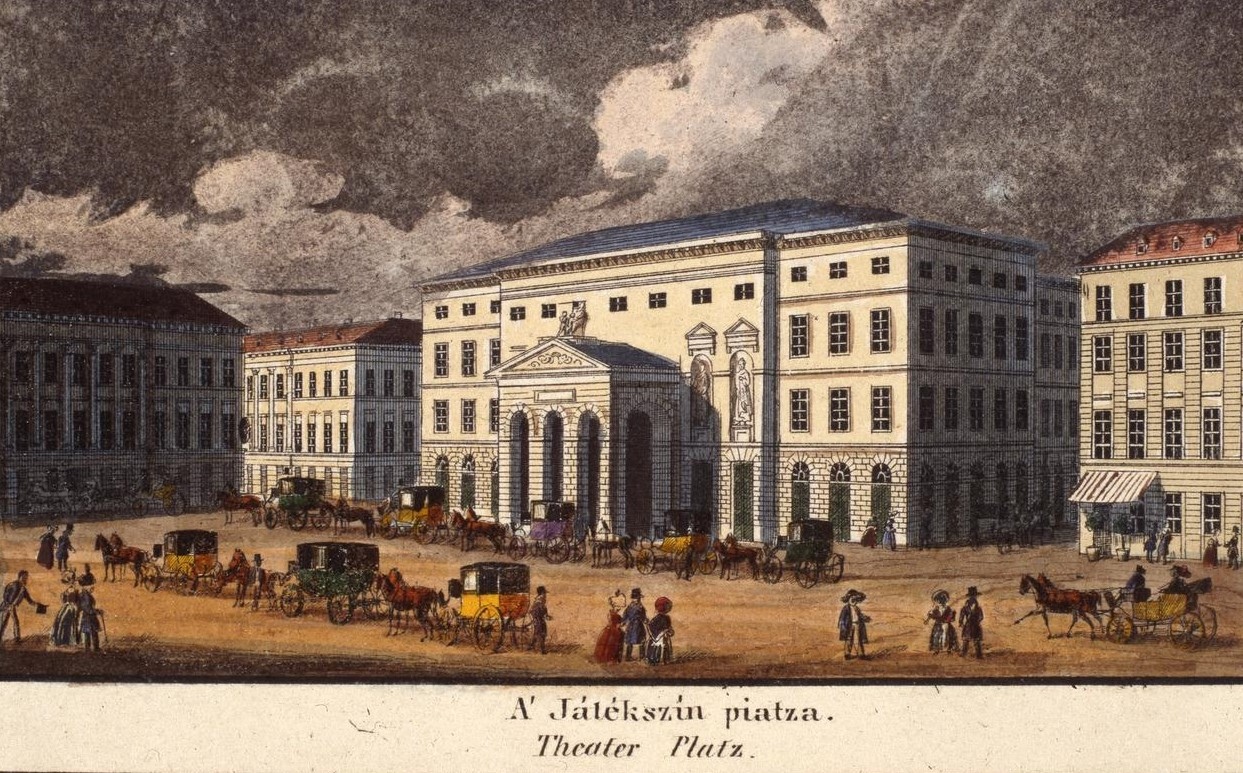
The German Theatre of Pest was built in 1812 on today's Vörösmarty Square, which was probably visited by Arany during his first stay in Pest in 1843. Drawing by Carl Vasquez from 1837 (Source: FSZEK Budapest Collection)
The city already had two theatres at the time. Opened in 1812, the German Theatre of Pest, located on today's Vörösmarty (former Gizella and Színház) Square, and on the corner of today's Rákóczi Road and Múzeum Boulevard (former Kerepesi Road and Országút), the National Theatre became a permanent citadel of Hungarian acting.
Arany himself, who had been an actor a few years earlier in 1836, could not miss a performance in them, the experiences of which he returned to in the lines of his later poems.
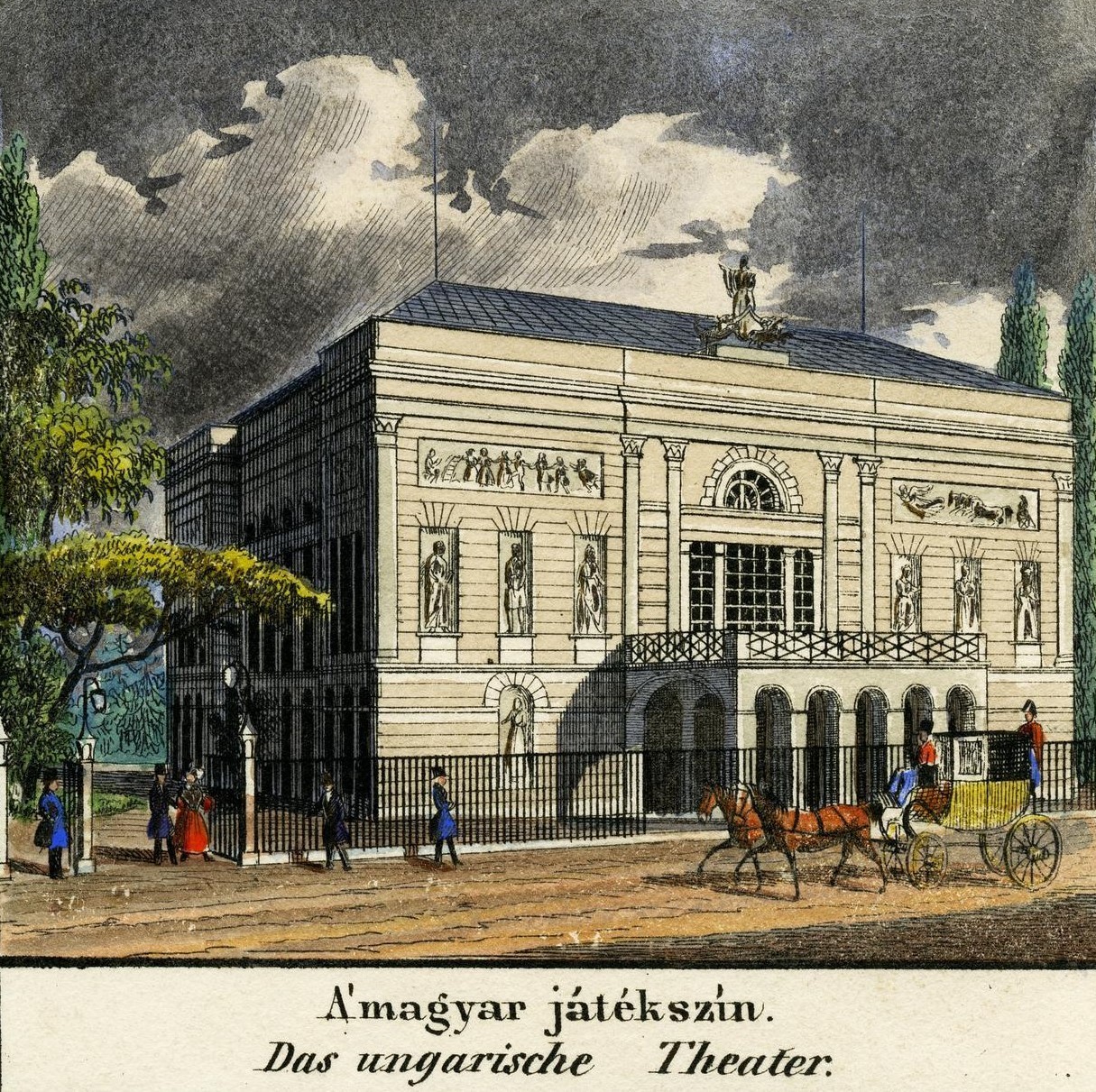
The Hungarian Theatre of Pest, built in 1837, has been called the National Theatre since 1841. Arany may have been here in 1843 as well. Graphics by Carl Vasquez from 1837 (Source: FSZEK Budapest Collection)
1848–1849 was a period of revolution and war of independence in Pest and the country, and Arany was then preoccupied with the idea of moving to Pest. The classicist city, which was developing and beautifying rapidly may have had a great impact on Arany, as well as all those who came to Pest during the Reformation. In his autobiography, he recalled that he visited Pest three times, and the bustling intellectual life and beauty of the city captivated him. "After 1848, I went to Pest several times (three times) and began to want its light," he wrote later, in 1855.
The thought of Pest raced through his head, and it did not let him rest. By this time, he was already seriously considering the plan to move, and the development of historical events also contributed to its realisation. When, in 1849, after the recapture of Buda, the government, in which he took up the position of draftsman in the Ministry of the Interior, moved to the capital, Arany also came to Pest and planned to move his family living in Szalonta as well.
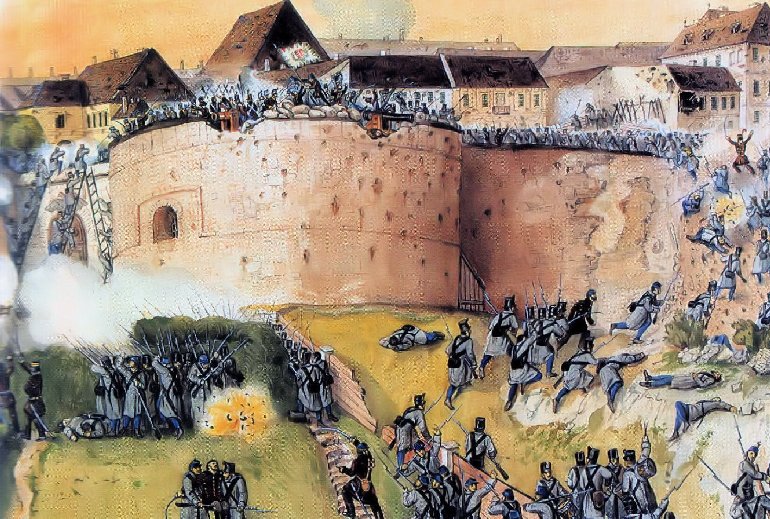
The Hungarian Theatre of Pest, built in 1837, has been called the National Theatre since 1841. Arany may have been here in 1843 as well. Graphics by Carl Vasquez from 1837 (Source: FSZEK Budapest Collection)
1848–1849 was a period of revolution and war of independence in Pest and the country, and Arany was then preoccupied with the idea of moving to Pest. The classicist city, which was developing and beautifying rapidly may have had a great impact on Arany, as well as all those who came to Pest during the Reformation. In his autobiography, he recalled that he visited Pest three times, and the bustling intellectual life and beauty of the city captivated him. "After 1848, I went to Pest several times (three times) and began to want its light," he wrote later, in 1855.
The thought of Pest raced through his head, and it did not let him rest. By this time, he was already seriously considering the plan to move, and the development of historical events also contributed to its realisation. When, in 1849, after the recapture of Buda, the government, in which he took up the position of draftsman in the Ministry of the Interior, moved to the capital, Arany also came to Pest and planned to move his family living in Szalonta as well.
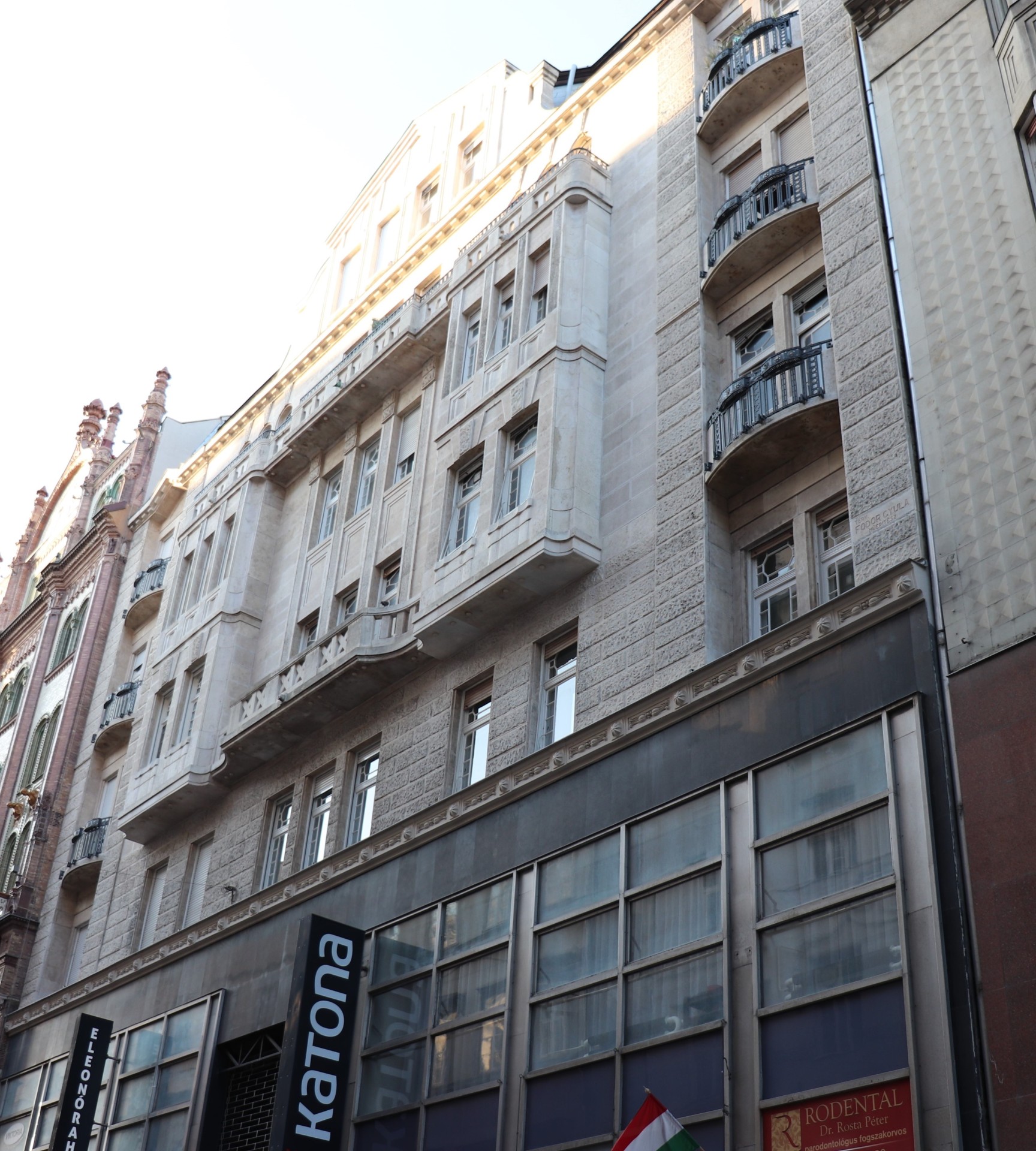
The house of László Horváth, under 6 Petőfi Sándor Street, where János Arany wanted to live with his family in 1849, and where he lived for a short time with his poet friend, János Garay (Photo: Zsolt Dubniczky/pestbuda.hu)
During the dictatorship of the 1850s, not only did political, intellectual and cultural life in the country fade into the background, but Arany's idea of moving to Pest also faded. Of course, he was not completely cut off from the city during this time, but the connection was limited to rarer, occasional appearances instead of being here permanently. As he wrote in a letter around the middle of the decade, he had little connection with Pest, his friends visited him during their visits to Nagykőrös.
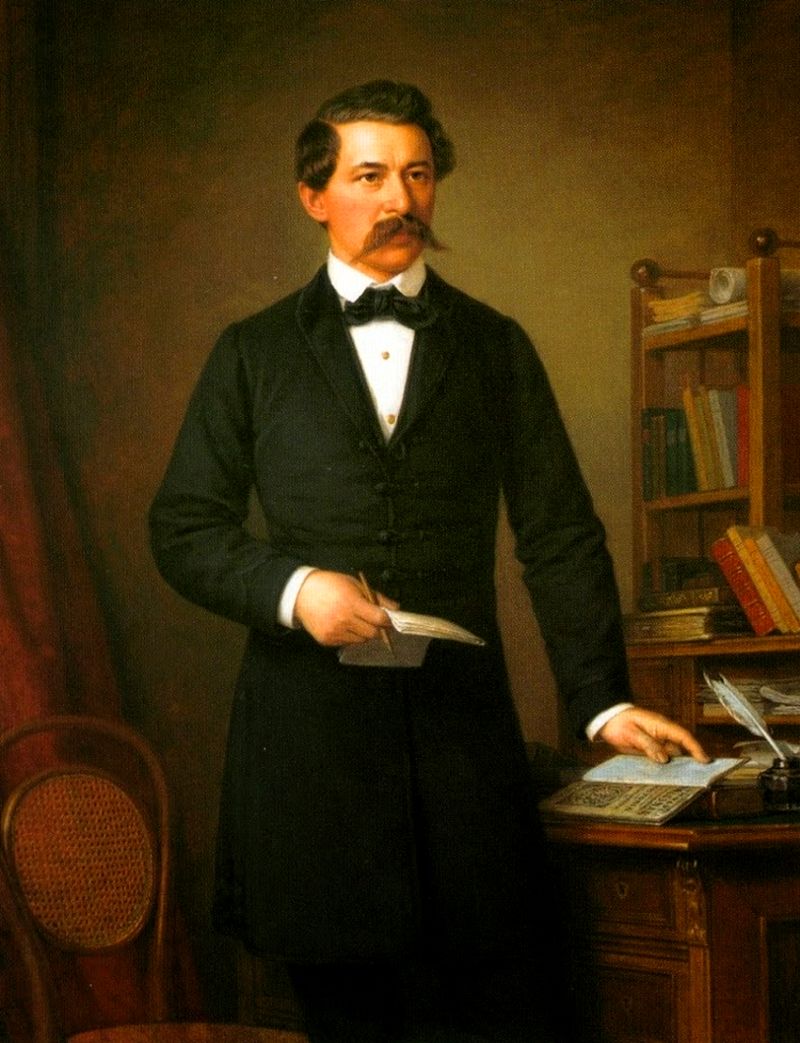
Miklós Barabás: János Arany (1848)
The very beginning of the 1860s was the period of the revival of political life in Hungary. The October Diploma and the February Patent, and the parliament convened in the wake of it provided new hope for the restoration of constitutionality in Hungary. The absolutist policy following the suppression of the war of independence seemed to ease, as Kálmán Mikszáth put it: “you could feel the limp of the hands holding the reins of power”. The leaders of political life gathered again in Pest and had high hopes for the parliament convened in 1861.
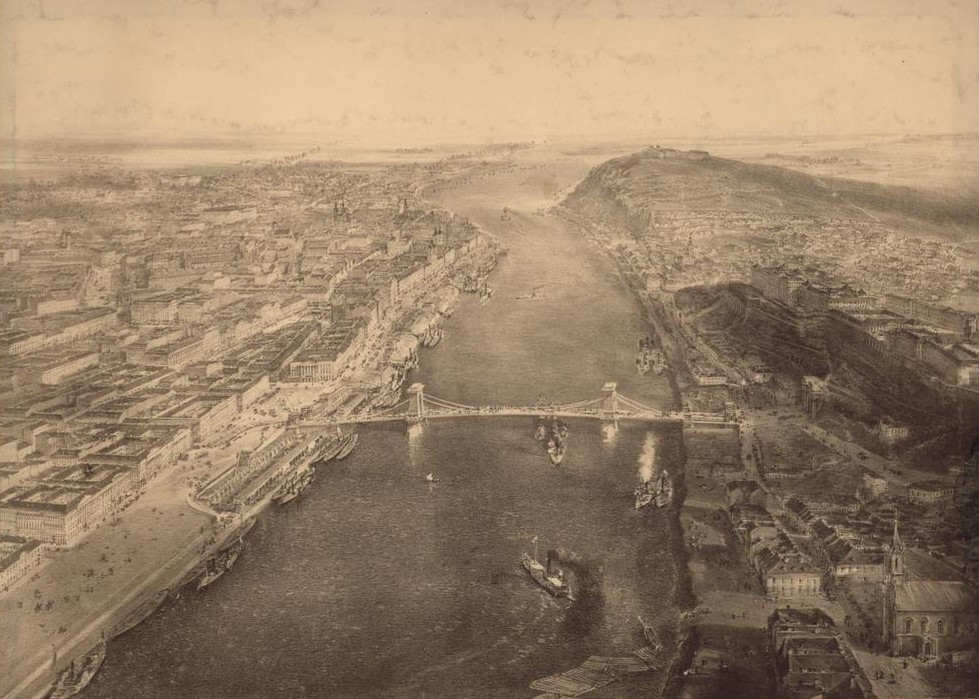
Pest-Buda in 1860, when Arany moved to Pest and the city was prepared for parliament the following year (Source: FSZEK Budapest Collection)
The year 1860 was crucial for János Arany in terms of his stay in Pest: he moved to Pest with his family and became a permanent resident of the city. Of course, the revival of literary life in the second half of the 1850s, in which the poet could participate only peripherally and sporadically through his stay in the countryside, contributed to this. Arany, who was struggling to move and has always been afraid of change, was probably pushed by his academic membership. In 1859 he was re-elected by the re-established board, and with his one-and-a-half-hour inaugural speech held on 31 October 1859, he joined the ranks of the esteemed men of the scientific society.
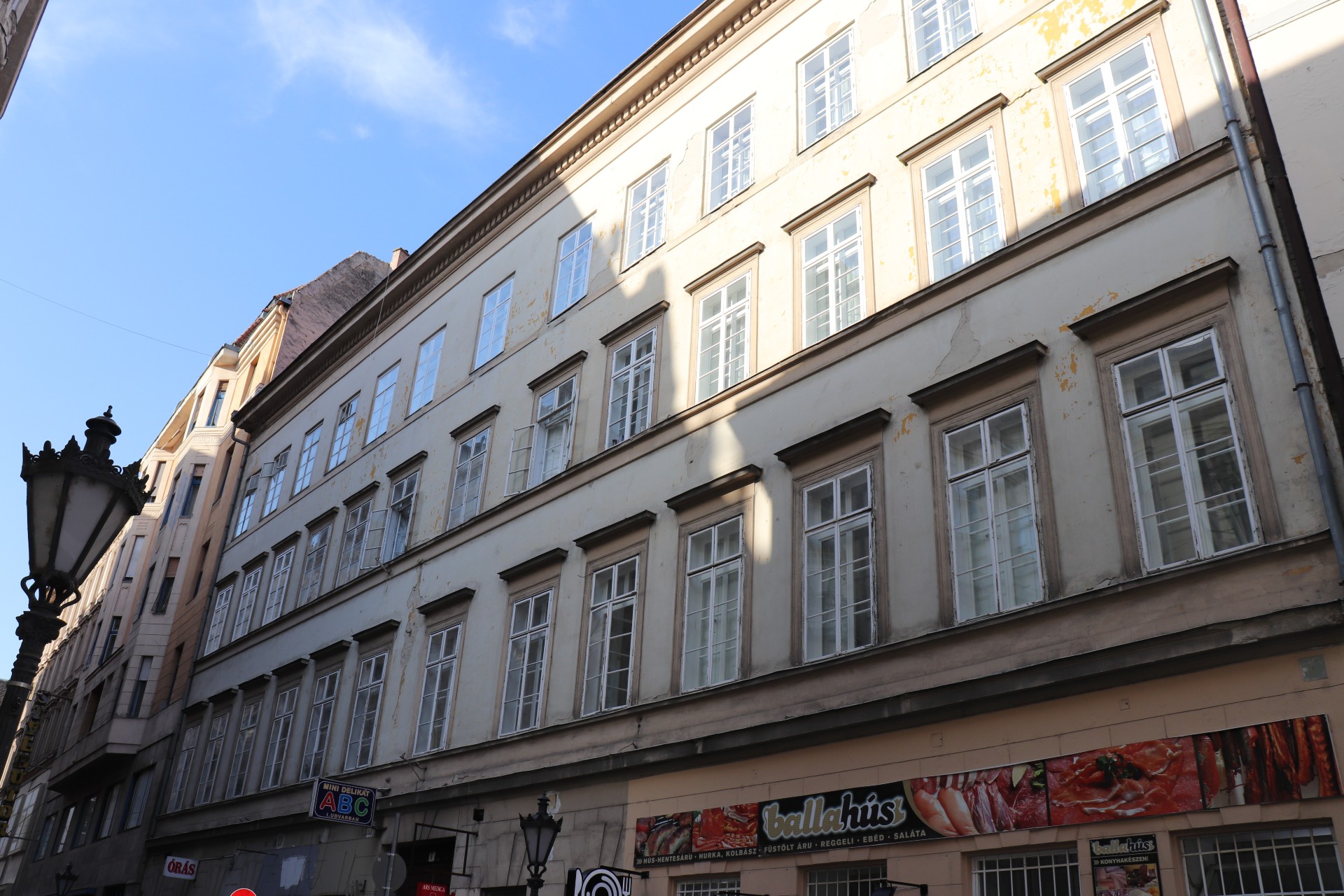
Between 1833 and 1865, the Academy rented the first and second floors of the Trattner-Károlyi House, which faces today's Városház Street. János Arany read his inaugural speech here on 31 October 1859 (Photo: Zsolt Dubniczky/pestbuda.hu)
"It was difficult for me to get accommodation because I needed it quickly and in an extraordinary time," he wrote to Mihály Tompa on 29 September 1860. His first permanent apartment in Pest was on the corner of today's Üllői Road and Erkel (then Három Pipa) Street, not in the most ideal conditions. But not even the four-room apartment with relatively low rent, but rather the residents of the house itself and the neighbourhood was worrying for him. The place, which was still a suburb at the time, and the noisy people of the house, who often took care of their troublesome issues with their fists, did not necessarily serve the calm and prolific creative work. It is no coincidence that a year later Arany was preoccupied with the idea of moving, which he had to wait four years for, depending on the poet's temperament and perhaps the housing supply. In 1864 they moved to 7 Üllői Road, only a few metres away, where they spent three years.
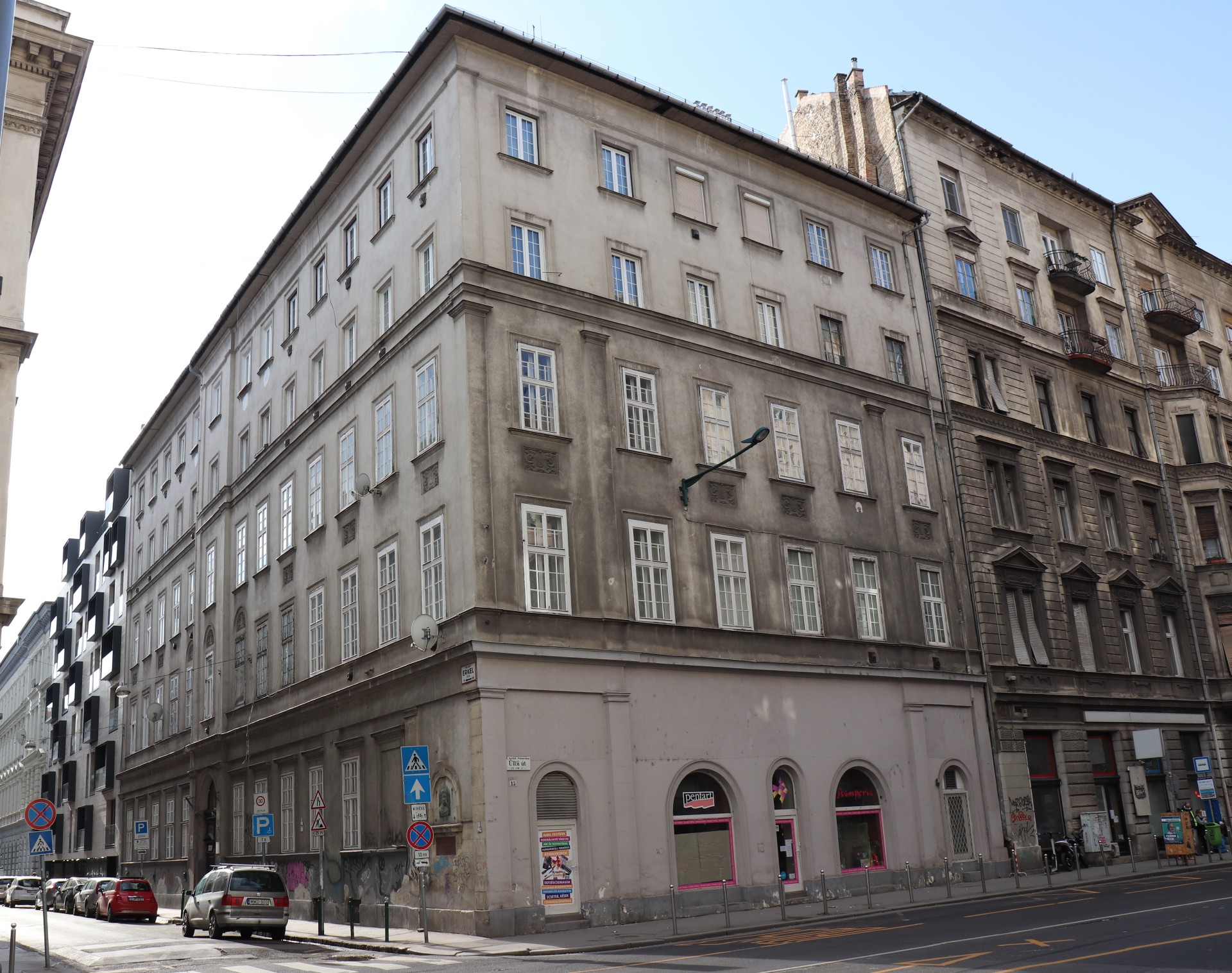
The former two-storey house on the corner of today's Erkel Street and Üllői Road, where János Arany and his family lived between 1860 and 1864 (Photo: Zsolt Dubniczky/pestbuda.hu)
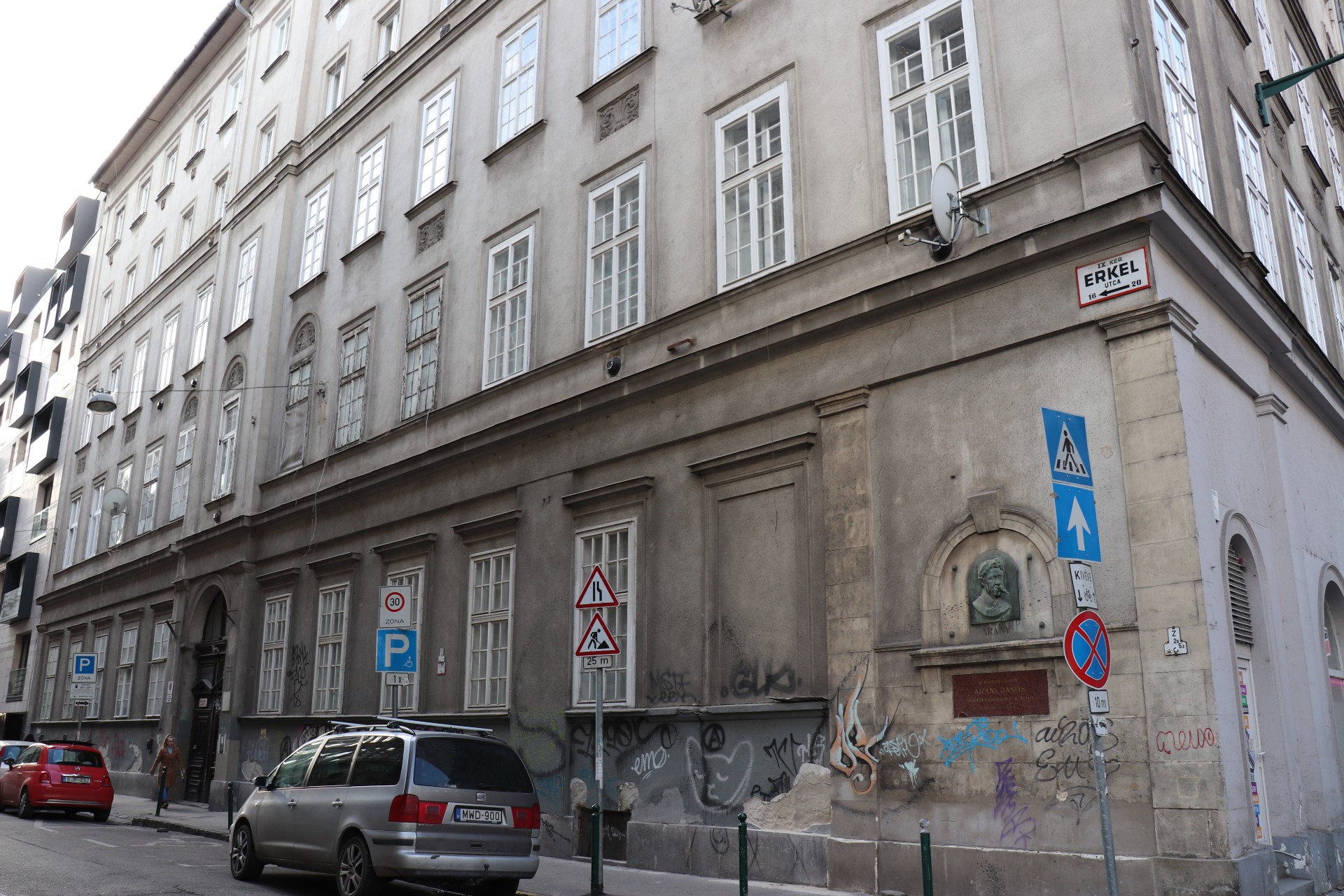
The Erkel (former Három Pipa) Street side of the slightly worn house, with the relief and memorial plaque of the poet on the wall (Photo: Zsolt Dubniczky/pestbuda.hu)
.jpg)
The Arany Relief on the wall of the house was made by Jenő Martinelli in 1925. Below the relief, the plaque reads: The wreathed poet of our nation JÁNOS ARANY lived in this house from 1860 to 1864 (Photo: Zsolt Dubniczky/pestbuda.hu).
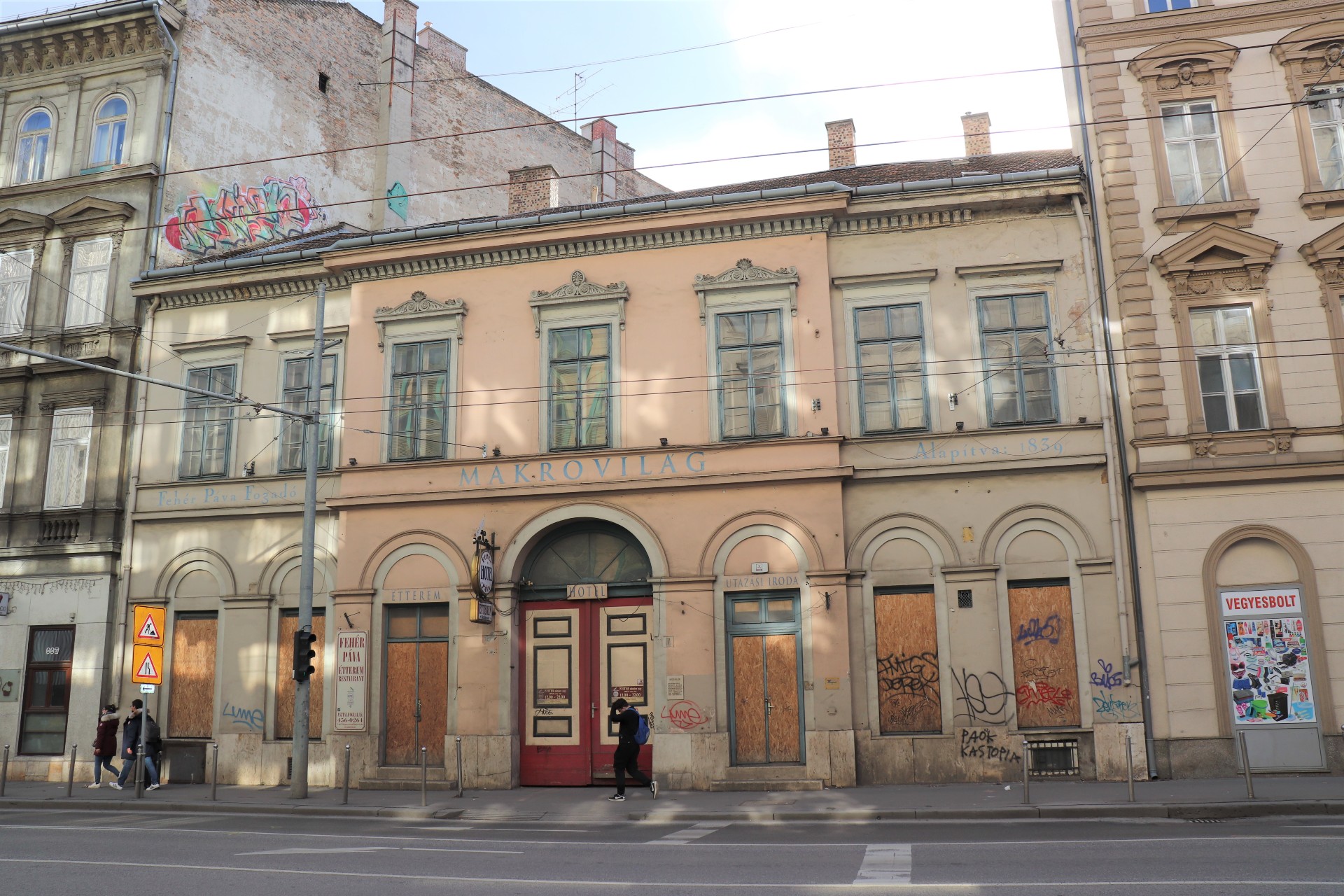
The building at 7 Üllői Road, where Arany moved in 1864. The building was built in 1839, after the flood, according to the plans of Ferenc Kasselik (Photo: Zsolt Dubniczky/pestbuda.hu).
In 1865, Arany was elected Secretary of the Academy, which gave hope for the improvement of housing conditions in Pest. But he had to be disappointed. Because at that time he had not yet received the secretary's apartment in the newly built Academy building that would have belonged to him ex officio. But after two years of defiance, bitterness and suffocated grief, he finally managed to get an apartment in the new building.
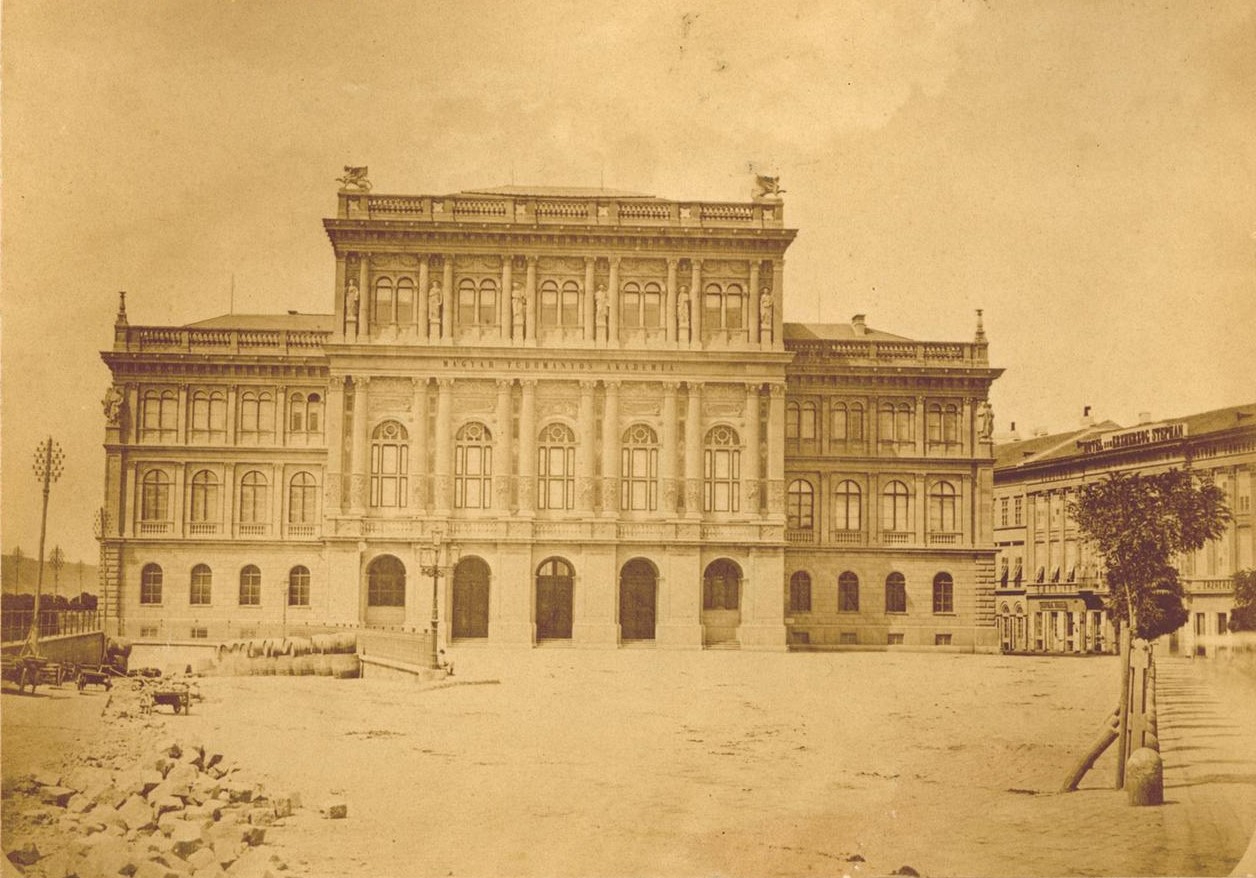
The new palace of the Academy around 1865, when János Arany could not occupy the apartment, but in 1867 he managed to get the housing belonging to the secretary (Source: FSZEK Budapest Collection)
In 1867, the country had reached a compromise with the Habsburgs, and, albeit somewhat limited, it had regained the independence and autonomy, the right and practice of self-determination it had lost at Mohács half a millennium ago, and in the decades that followed. In addition, Hungary was preparing for a coronation, the spectacular event of which Arany also watched, according to his own account, “sitting on a two-forint perch in the company of craftsmen and high-society women", and then “in the crowds on the street”.
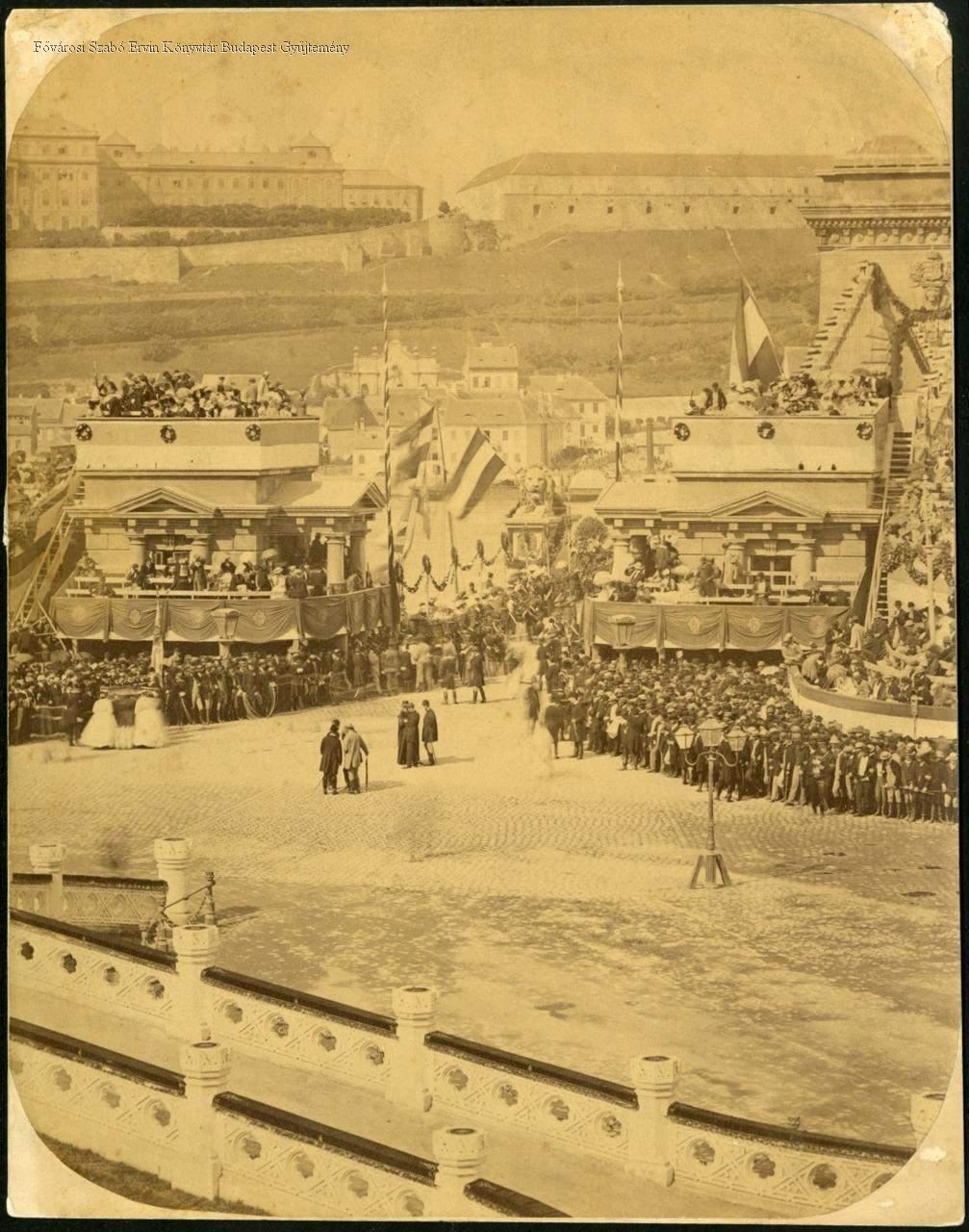
In 1867, the waiting audience on the Pest side of the Chain Bridge, at the coronation hill. János Arany watched the ceremony “sitting on a two-forint perch in the company of craftsmen and high-society women” (Source: FSZEK Budapest Collection)
In addition to self-determination, 1867 brought stability to the country, and for Arany, it meant something similar. As a result of a complainant's letter to Menyhért Lónyay, Vice-President of the Academy, and a tactful request from President Baron József Eötvös, the poet was able to occupy the office building for the Secretary in the building of the Academy, where he lived until his death.
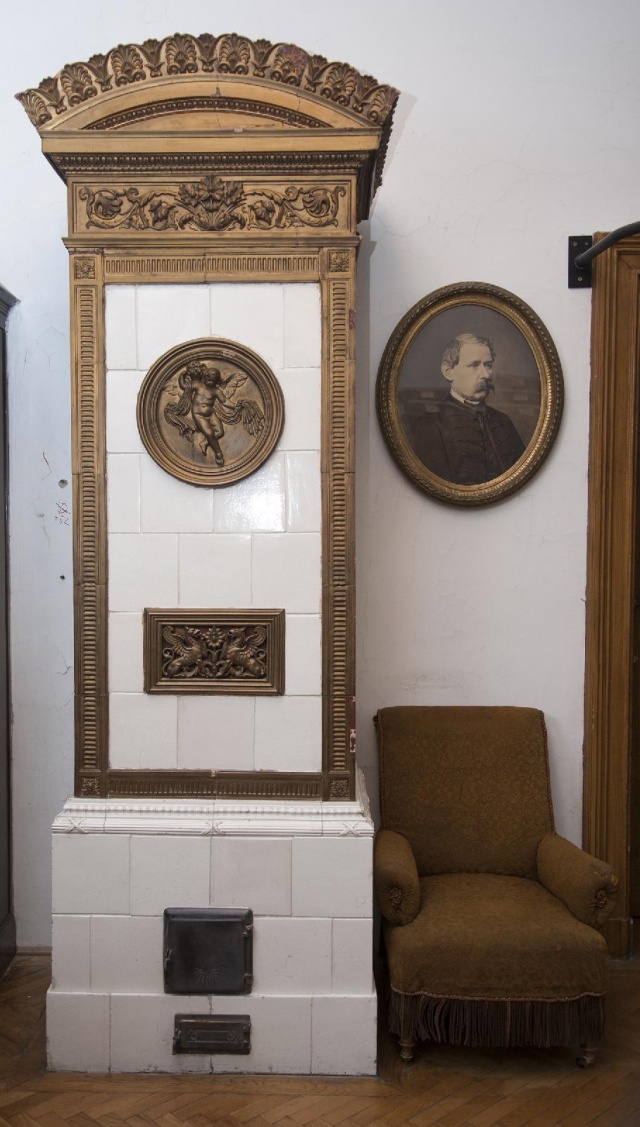
Detail of the former Secretary General's apartment in the Headquarters of the Hungarian Academy of Sciences, in the Manuscript Library and Rare Books Collection of the Library and Information Centre of the Hungarian Academy of Sciences (Photo: mta.hu/Tamás Szigeti)
In 1882, his body was coffinated in the colonnade of the Academy, and from there he was accompanied by the country on his last journey.
Cover photo: House under 7 Üllői Road (Photo: Zsolt Dubniczky/pestbuda.hu)

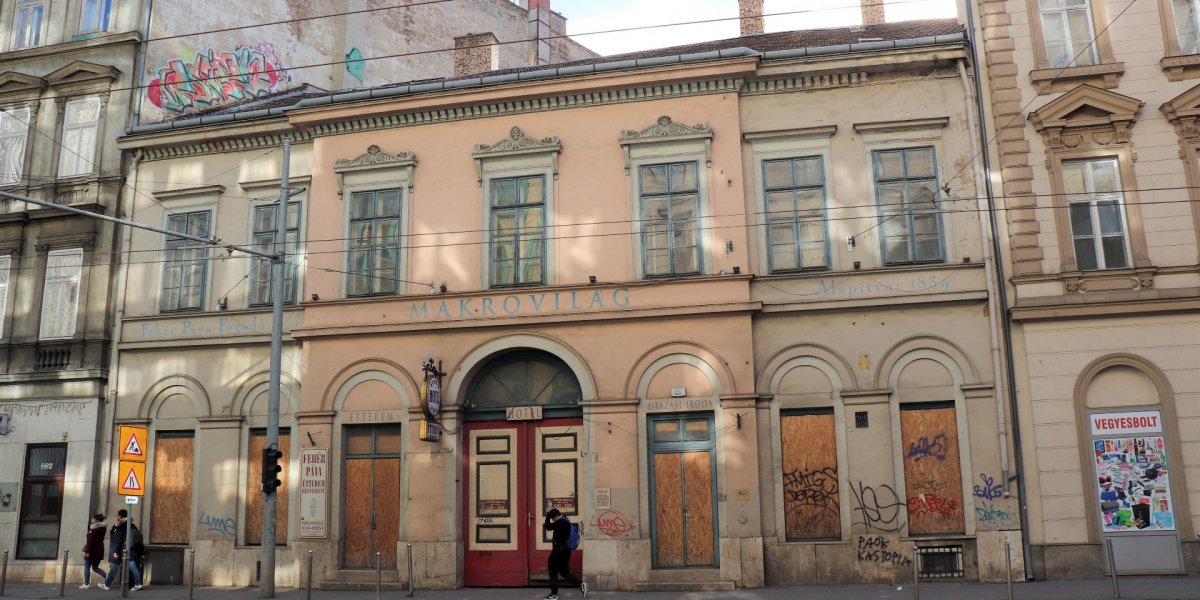


































Hozzászólások
Log in or register to comment!
Login Registration